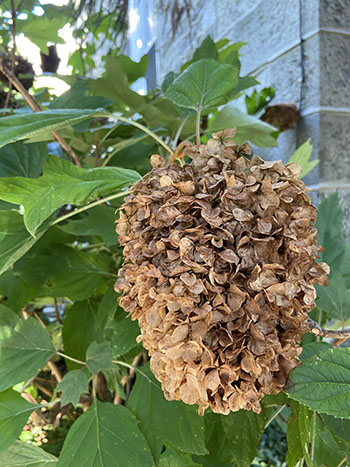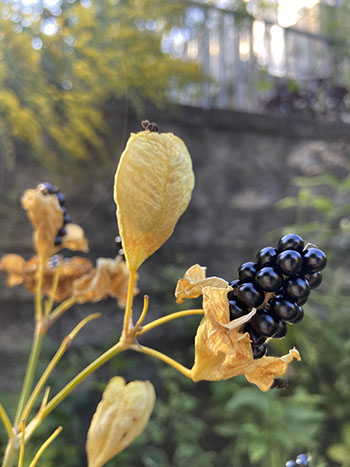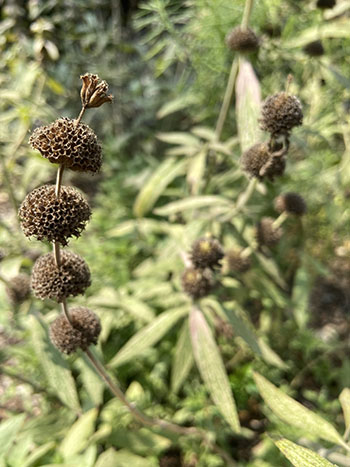
Plants of the Week: September 19

Hydrangea quercifolia ‘Harmony’ (oakleaf hydrangea)
During peak summer, the stems of the Hydrangea quercifolia ‘Harmony’ (oakleaf hydrangea) may weep under the weight of its pure white, densely compacted panicles. Beginning its lengthy flowering cycle in late-spring to early-summer, these cloud-like inflorescences delight viewers and pollinators alike. As we reach towards the end of summer however, you will start to notice the white fading into brown until the whole panicle has lost its summer brilliance. But in this transition, the oakleaf hydrangea is not yet done being of interest in the garden. The brown panicles provide a dynamic contrast against the dark green of the 5-7 lobed leaves and are attractive in their own regard. They give a preview to fall where tones become more earthy in the gardenscape.
This browning can be misleading. It is not a result of ill care or neglect, rather, it is the next step for the inflorescences. The originally white, now brown flower-like clusters on the Hydrangea quercifolia ‘Harmony’ are actually not flowers but the bracts; the sterile florets that surround the fertile flowers that are located on the inside of the panicle. It is the natural cycle of these bracts to emerge green, transition to brilliant white, and then fade into brown throughout the summer.
As we transition into autumn the leaves of the oakleaf hydrangea will darken into a sumptuous wine-maroon. The combination of the dark leaves and the brown panicles will certainly set the mood for your autumn garden and I highly recommend embracing this later inflorescence stage. Watch this flower progress in plantings around Parrish West Circle. Photo credit: M. Rossman

Iris domestica (blackberry lily)
I stumbled upon the seedheads of the Iris domestica (blackberry lily) in the Cut Flower Garden. Being from the southwest, I was unfamiliar with the Iris domestica and its reproductive stages, and I was instantly intrigued. Receiving its common name from the blackberry appearance of the split-open seed heads, my first impression was of shiny black beads, delicately stitched together that would fashion well as earrings or as adornment on a dress.
This Iridaceae family specimen has fan-like foliage arranged on a small, tuberous rhizome and can grow up to 18” tall. Yellow-orange short-lived flowers are born on 2-3 foot tall slender stems during July through August. The flowers then give way to pear-shaped seed capsules that transition from green to tan and eventually split to reveal the shiny black seeds arranged in clusters. While the flowers may be fleeting the seed heads are not and can remain intact for several months, providing early winter interest. Photo credit: M. Rossman

Monarda punctata (spotted bee balm)
As you are walking up College Ave towards the Scott Arboretum offices there is a plant content in the dry gravel and the full sun. It has long lost its flowers and bracts, and now, on its square stems, there are, what look like pompoms on a string. The late stage of the Monarda punctata (spotted bee balm) is a joyful stalk, remnants of a plant that provides interest all summer long.
This herbaceous perennial is native to the eastern United States and can typically be found in full-sun areas with dry soils. It blooms from June to July and is all the fun of the species Monarda but with more blooms on each stem. Stacked inflorescences with large, leafy bracts radiate out from the stem, just below each flower head. The bracts can range in color from light pink to white, while the flowers are yellow with brown spots and are only visible close up. When spotted bee balm defoliates you are left with a set of tiered pompoms slowly wafting in the breeze.
These flowers are incredibly popular with pollinators and attract beneficial predatory wasps to the garden which help to control pesky grubs and caterpillars. A spectacular plant all around I greatly enjoy the late life cycle of the spotted bee balm. Photo credit: M. Rossman





No Comments